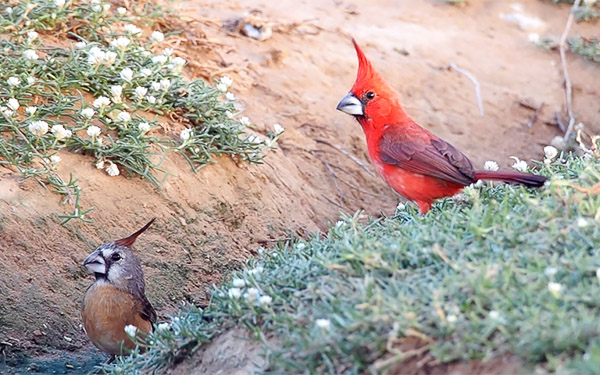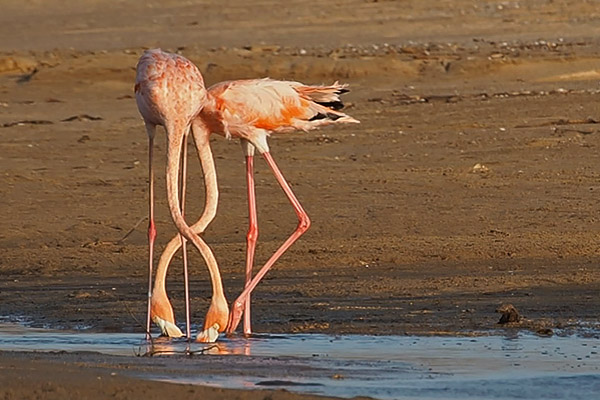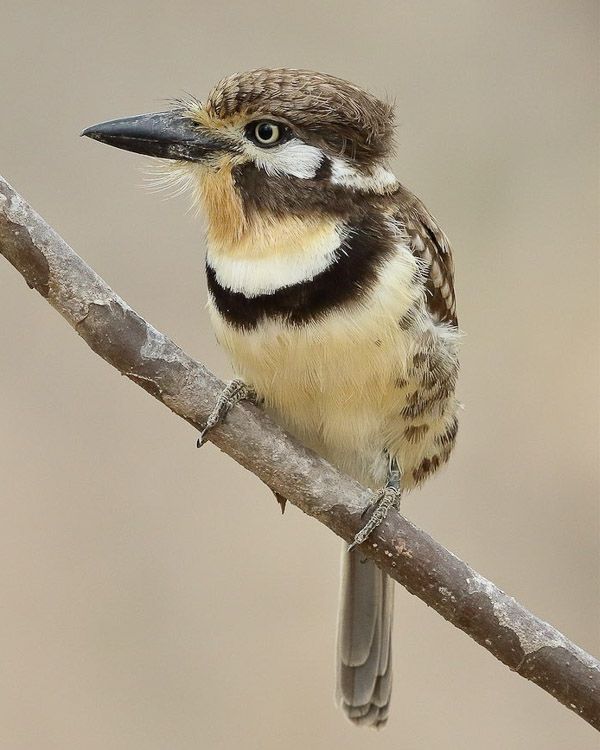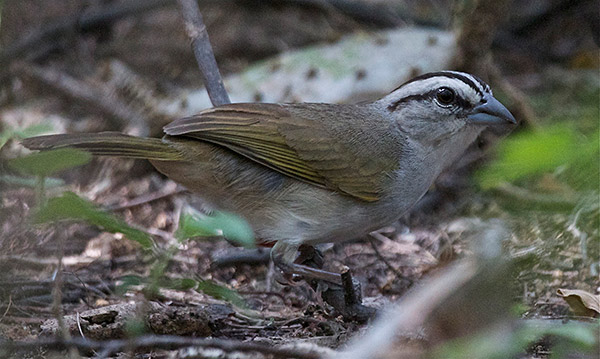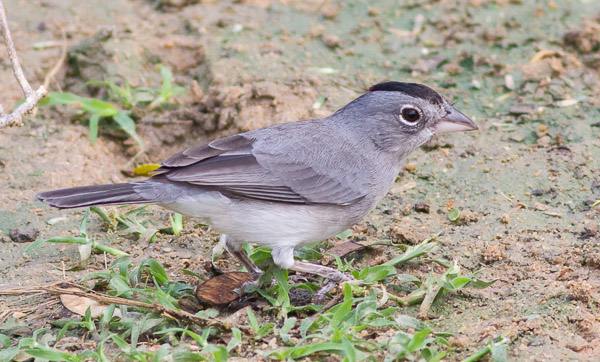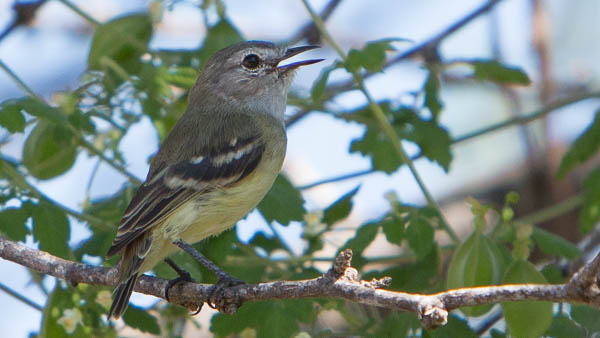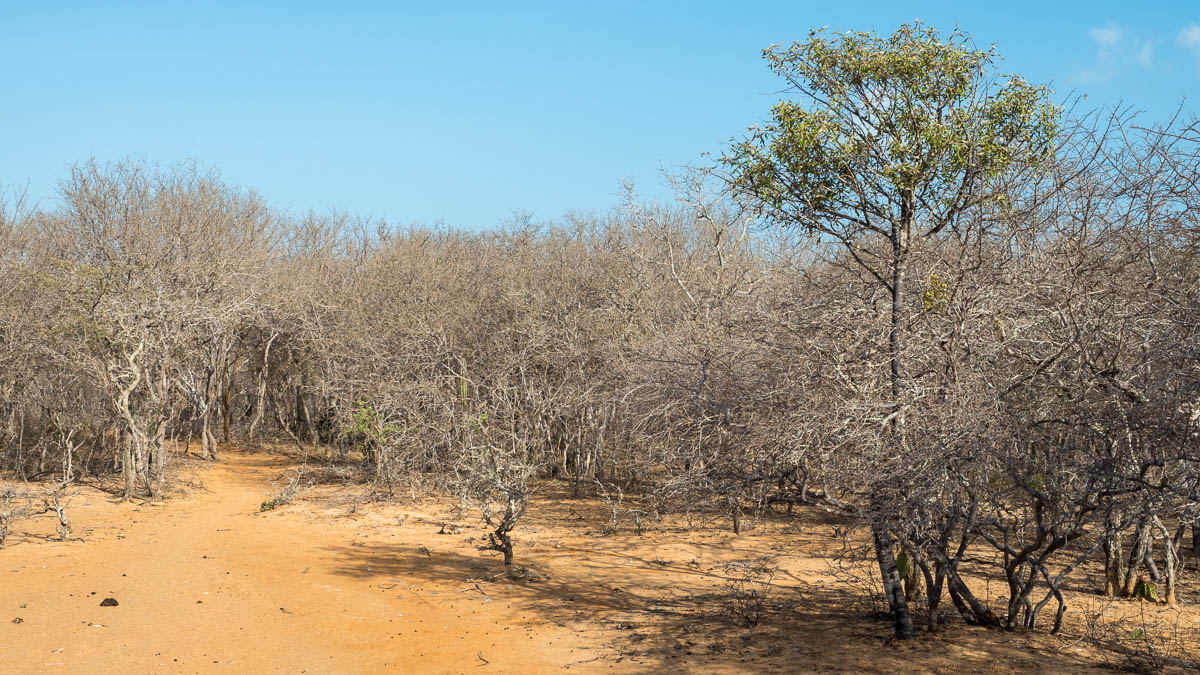
Tropical dry forest at Los Flamencos Sanctuary. Photo: Chris Fischer Photography
Los Flamencos Flora and Fauna Sanctuary
Los Flamencos Sanctuary is an important coastal wetland and dry forest reserve created to protect a large population of the American Flamingo. This 17,000+ acre reserve of marshes, lagoons, and dry forest is also habitat to 185 other bird species (80% are migrants).
Very near the city of Riohacha is Los Flamencos and the village of Camarones. This is the west edge of the Guajira desert, where dry forest becomes shorter and sparser, where bare dry earth separates the trees from each other. But before you have a mistaken idea of a parched world, Los Flamencos is on the coast and it has shallow waterbodies that fill as the rains come, and evaporate during the dry season. These evaporating ponds concentrate salt, and then brine shrimp bloom which brings in the namesake bird of the park ‐ American Flamingos! Their numbers vary depending on water levels, but they can be here in the hundreds on a good day. If you have not had enough pink, how about the even brighter Scarlet Ibis? They concentrate here as well, with their very close relatives the White Ibis. They are so close in fact that every once in a while a hybrid "Pink Ibis" is seen here. Gulls, terns, and many, many migratory shorebirds are to be found at Los Flamencos.
Retreating to the forest, the xerophytic scrub vegetation of the area is very productive for all of the Guajira specialties restricted to NE Colombia and NW Venezuela, including Rufous-vented Chachalaca, Bare-eyed Pigeon, Buffy Hummingbird, Russet-throated Puffbird, Chestnut Piculet, White-whiskered Spinetail, Slender-billed Inezia, Orinocan Saltator, Pileated Finch, Tocuyo Sparrow and the splendid Vermillion Cardinal.
The sole South American offshoot of what is really a North American group, the Vermilion Cardinal is called "El Ray de la Guajira" ("King of the Guajira") by locals. Nothing prepares you, even if you have backyard Northern Cardinals, for the striking red of this species, the overdone crest and the very different look to its close relatives from the north.
The scrub also holds Crested Bobwhite, Blue-crowned and Brown-throated Parakeets, Green-rumped Parrotlet, Black-crested Antshrike, White-fringed Antwren and Northern Scrub-Flycatcher.
On the ground, a member of a group that is usually very drab and brown, may elicit "wows!" from the crowd ‐ the White-whiskered Spinetail is one heck of a good looking Spinetail. Pecking in the branches and trilling away is a tiny and colorful woodpecker, the Chestnut Piculet. Sure there are specialties that are more somber in tone, such as the Slender-billed Inezia (Tyrannulet), and White-tipped Inezia. A popular favorite is the Russet-throated Puffbird (the Bobo or fool bird as the locals call it) who will just sit there, staring back at you as hard as you stare at it. In a crowd of what tend to be relatively greenish or grayish and nondescript birds, the saltators, the uncommon Orinoco Saltator actually is quite a good looking bird. Don't ask why there are so many good looking birds in this drab desert habitat ‐ just enjoy these wonderful dry forest birds!
The local community who are taking part in our project are mainly Wayuu indigenous people. They are known for their colorful bags (mochilas), which are sold throughout the Guajira region, and you will certainly have a chance to see their craftsmanship and maybe purchase a bag. The Wayuu are part of the Arawakan language group of people, a highly successful South American group who also ventured north to Central America as well as the Caribbean!

